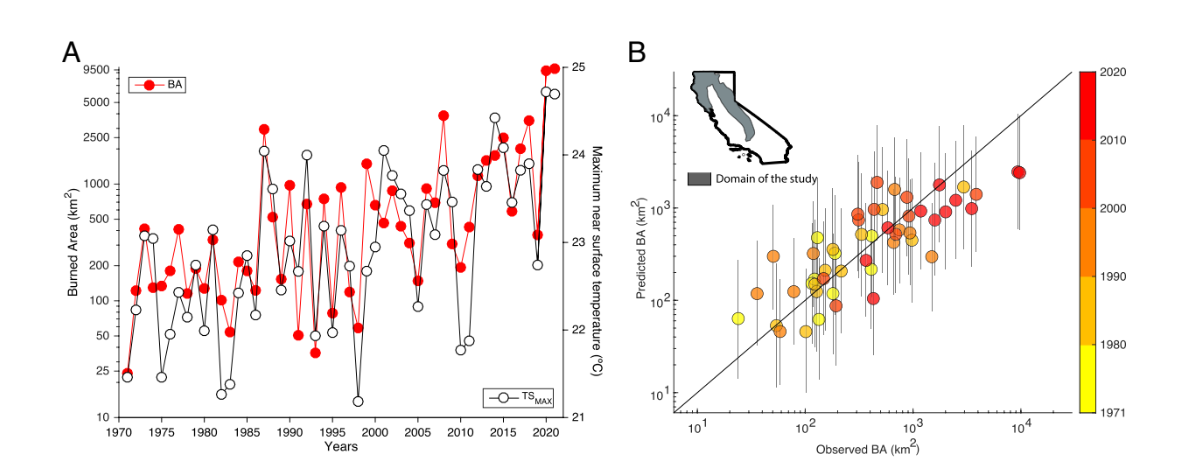Record-breaking forest fires during California’s summer months have become a regular occurrence. Wildfires not only cause catastrophic environmental and socioeconomic impacts, but also have negative consequences for human health. Environmental observations indicate that summer burned areas (BA) in northern and central California have increased fivefold during 1996 to 2021 compared to 1971 to 1995. While higher temperatures and increased dryness are thought to be the leading causes of increased BA, the extent to which BA changes due to natural variability or man-made climate change remains largely unresolved. With 10 of the largest California wildfires occurring in the last 20 years—five of which occurred in 2020 alone—scientists are asking if man-made climate change is to blame.
In a new Earth, Atmospheric, and Planetary Sciences article, authors Marco Turco, John Abatzoglou, Sixto Herrera, Yizhou Zhuang, Sonia Jerez, Donald D. Lucas, Amir AghaKouchak, and Ivana Cvijanovic create a climate-driven model of summer BA evolution in California and combine it with natural and historical climate simulations to assess the importance of man-made climate change on increased BA.
It was found that nearly all the observed increase in BA over the past half-century is due to man-made climate change. It is estimated that from 1971 to 2021, man-made climate change contributed to a +172% increase in BA, with a remarkable +320% increase from 1996 to 2021. In the coming decades, a further increase in annual forest BA is expected, ranging from 3 to 52%.


(A) Time series of summer (May to September) forest fire burned area (BA, in red) and spring to summer (April to October) maximum near surface temperature (TSMAX; in black) from 1971 to 2021; (B) observed versus out-of-sample 10-fold predicted changes in BA. Vertical gray lines indicate 2.5th and 97.5th percentiles of 10,000 different predictions. Colors indicate the decade of each sample. The Inset shows a map of California with the domain of interest shaded in gray.
The authors note that the results show the observed increase in BA in California’s forests is consistent with man-made climate change and unlikely to have resulted from natural variability alone. This study represents an important step toward overall accountability of the climate change impacts. As the current state of knowledge suggests, and results strongly support, immediate action toward mitigating the impacts of global warming alongside proactive land management practices that can improve the resilience of forested landscape to wildfire will be necessary. Additionally, the authors note that further work on this topic should include additional scenarios for future fire management policies, land use, and land cover change.
This study was funded by NIDIS in partnership with the MAPP program.
Read the full paper here »
For more information, contact Courtney Byrd.
Image credit: A massive smoke plume from the Butte County Camp Fire covers the distant sky above the North Fork of Lake Oroville in Northern California. Photo taken November 8, 2018. Ken James / California Department of Water Resources



